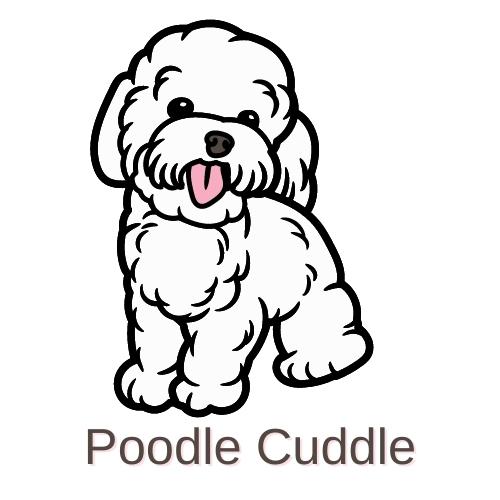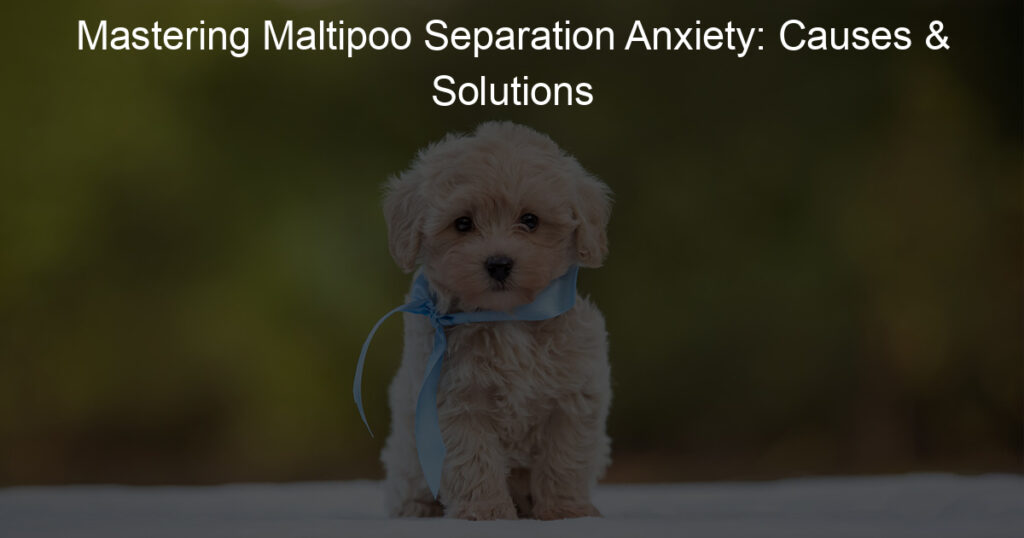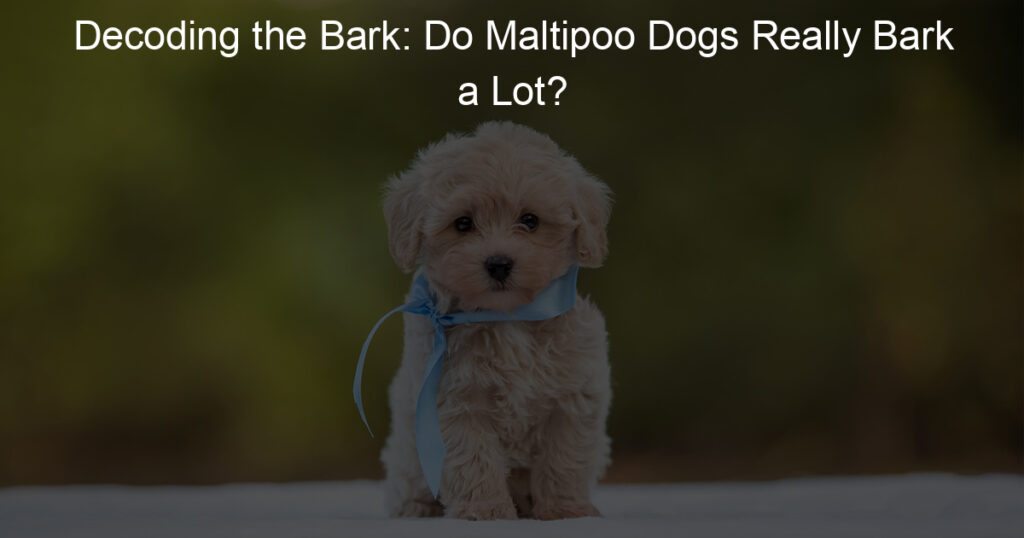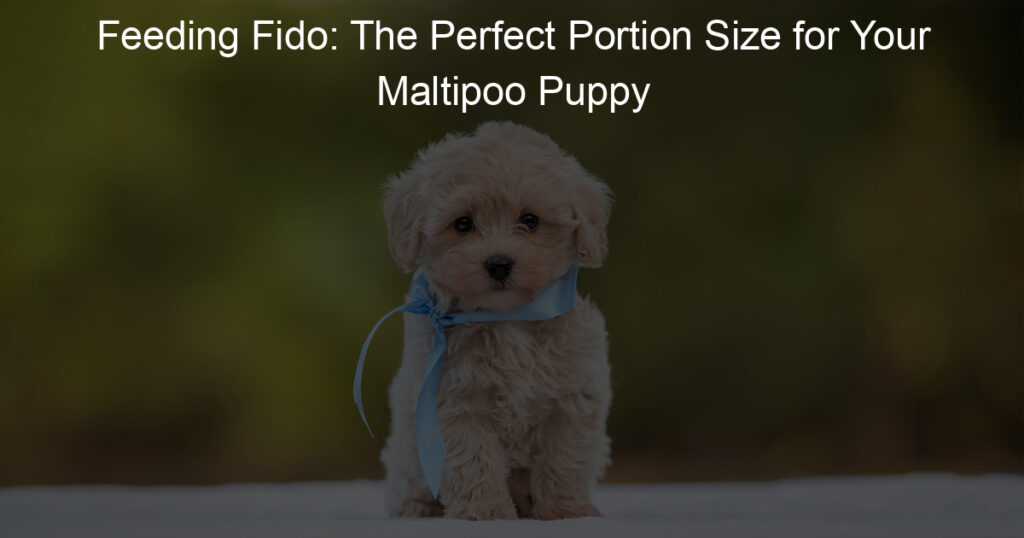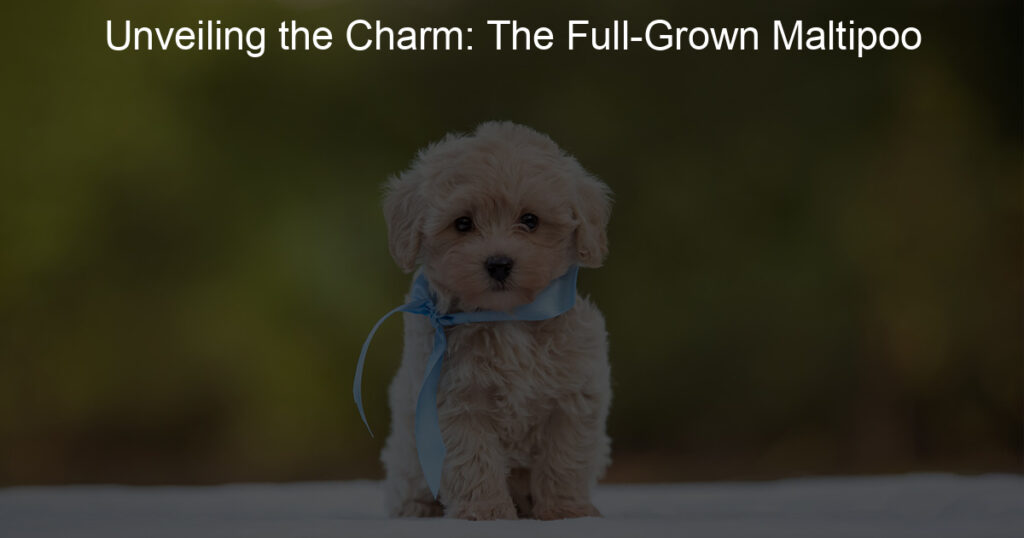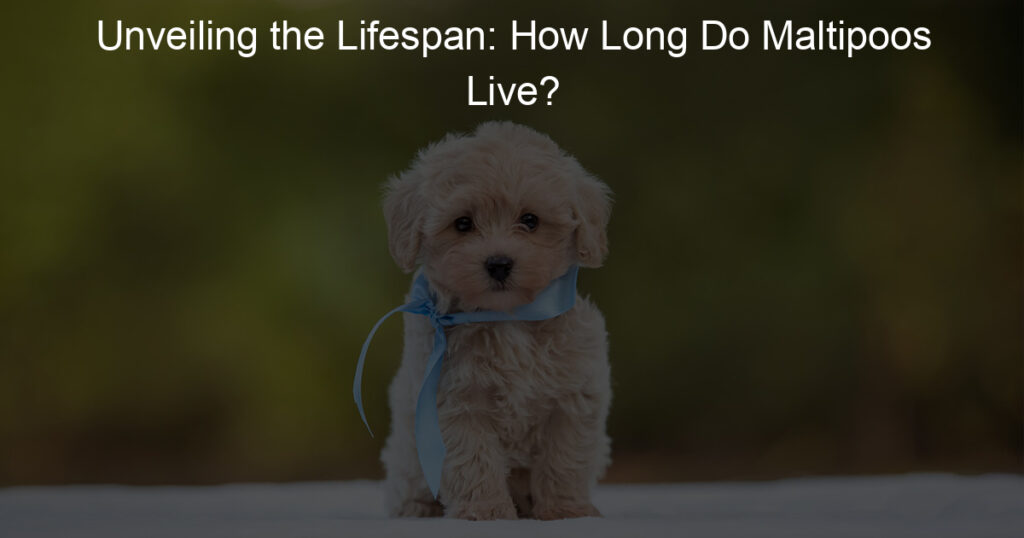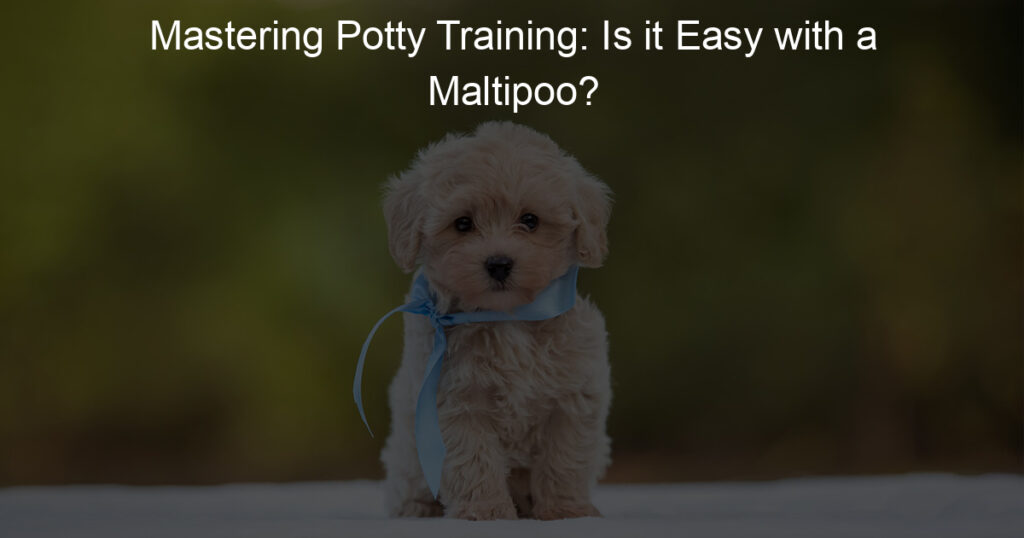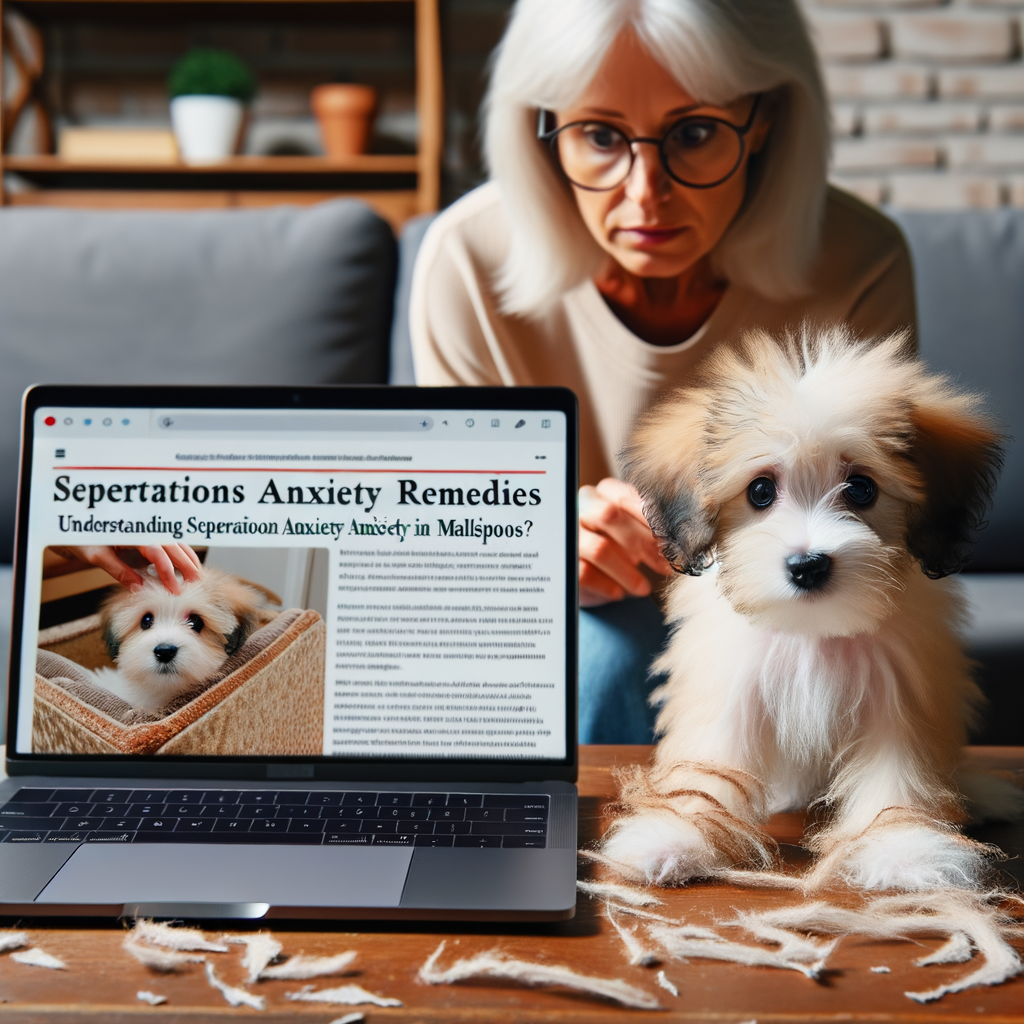
Understanding Maltipoo Separation Anxiety
Separation anxiety is a common issue among dogs, and Maltipoos are no exception. This condition can lead to various behavioral problems and symptoms that can affect your pet’s overall well-being. Let’s delve deeper into understanding Maltipoo separation anxiety.
- Definition of Maltipoo Separation Anxiety
- Common Maltipoo Behavior Problems Linked to Anxiety
- Destructive Behavior: This can include chewing on furniture, shoes, or other household items, and even self-destructive behaviors like excessive licking or chewing on their own body.
- Excessive Barking or Howling: If your Maltipoo barks or howls excessively when left alone, it could be a sign of separation anxiety.
- Pacing: Some Maltipoos with separation anxiety will pace in a fixed pattern when left alone.
- Attempts to Escape: In severe cases, a Maltipoo suffering from separation anxiety may attempt to escape from the area where they are confined when left alone.
- Maltipoo Anxiety Symptoms to Watch Out For
- Excessive Salivation: If your Maltipoo drools more than usual when you’re about to leave, it could be a sign of anxiety.
- Changes in Appetite: Anxiety can cause your Maltipoo to lose their appetite or have difficulty eating.
- Agitation: Your Maltipoo may appear restless or agitated when you’re preparing to leave.
- Depression: In some cases, Maltipoos with separation anxiety may show signs of depression, such as lack of interest in activities they usually enjoy.
Separation anxiety in Maltipoos is a distressing emotional disorder that occurs when your pet is left alone or separated from you. It’s a state of excessive worry and fear about being alone. This anxiety can manifest in various ways, including destructive behavior, excessive barking, and even self-harm. It’s important to understand that your Maltipoo isn’t acting out to punish you, but rather, they’re struggling with a serious psychological issue.
Several behavioral problems are commonly associated with Maltipoo separation anxiety. These include:
Recognizing the symptoms of Maltipoo separation anxiety is the first step towards helping your pet. Here are some signs to watch out for:
Understanding Maltipoo separation anxiety and its symptoms is crucial in helping your pet. In the following sections, we’ll explore the causes of this condition, coping strategies, treatment options, and prevention measures to ensure your Maltipoo lives a happy and anxiety-free life.
Causes of Separation Anxiety in Maltipoos
Understanding the causes of separation anxiety in Maltipoos is the first step towards managing it effectively. There are several factors that can contribute to this condition. Let’s delve into the three primary causes:
- Genetic predisposition: Just like humans, dogs can be genetically predisposed to certain conditions, including anxiety. Some Maltipoos may have inherited a tendency towards anxiety from their parent breeds – the Maltese and the Poodle. This doesn’t mean that every Maltipoo will suffer from separation anxiety, but it does increase the chances.
- Past trauma or abandonment: Maltipoos are sensitive dogs and they can be deeply affected by traumatic experiences. If a Maltipoo has been abandoned or neglected in the past, it may develop separation anxiety as a result. This is because the dog fears being left alone again and associates solitude with negative experiences.
- Changes in environment or routine: Maltipoos thrive on routine and consistency. Any major changes in their environment or daily routine can trigger anxiety. This could be something as simple as a change in the time they are fed, or as significant as a move to a new home. It’s important to introduce changes gradually where possible, to help your Maltipoo adjust.
Understanding these causes can help you to identify potential triggers for your Maltipoo’s anxiety and take steps to manage it effectively. Remember, every dog is unique and what causes anxiety in one Maltipoo may not affect another in the same way.
Coping Strategies for Maltipoo Anxiety
Dealing with a Maltipoo suffering from separation anxiety can be challenging. However, with the right strategies, you can help your furry friend cope with this condition. Here are some training techniques that can be effective.
Training Maltipoos with Separation Anxiety
Training is a crucial part of helping your Maltipoo manage their anxiety. It not only helps them feel more secure when alone but also strengthens the bond between you and your pet. Here are some strategies you can use:
- Establishing a routine
- Gradual desensitization to being alone
- Training commands that promote calmness
Just like humans, dogs thrive on routine. Having a predictable schedule can help reduce your Maltipoo’s anxiety. This can include regular feeding times, walks, playtime, and bedtime. A consistent routine can provide a sense of security for your pet.
Gradual desensitization involves slowly getting your Maltipoo used to being alone. Start by leaving your pet alone for a few minutes at a time, and gradually increase the duration. This can help your pet understand that you will always return, reducing their fear of being left alone.
Training your Maltipoo to respond to calming commands can be very helpful. Commands like “sit”, “stay”, and “relax” can help your pet calm down when they start to feel anxious. Remember, it’s important to reward your pet for following these commands to reinforce positive behavior.
Remember, patience is key when dealing with a Maltipoo with separation anxiety. It may take time for your pet to adjust to these changes, but with consistency and love, they can learn to cope with their anxiety.
Maltipoo Anxiety Remedies
When it comes to managing your Maltipoo’s anxiety, there are several strategies that can be effective. Here are some remedies that you can consider:
- Use of Calming Aids Like Toys and Blankets
- Natural Remedies and Supplements
- Consultation with a Vet for Medication
Calming aids such as toys and blankets can provide comfort to your Maltipoo during stressful situations. Toys can distract them from their anxiety, while blankets can provide a sense of security. A familiar object, like a favorite toy or blanket, can help your pet feel safe and relaxed.
Natural remedies and supplements can also be beneficial in managing your Maltipoo’s anxiety. For instance, chamomile and valerian root are known for their calming effects. However, it’s important to consult with your vet before introducing any new supplements into your pet’s diet to ensure they are safe and suitable for your Maltipoo.
If your Maltipoo’s anxiety is severe, it may be necessary to consult with a vet for medication. There are several types of medication that can help manage anxiety in dogs. Your vet can help you understand the benefits and risks of each option and choose the one that is best for your pet.
Remember, every Maltipoo is unique and what works for one may not work for another. It’s important to be patient and persistent in finding the right solution for your furry friend’s anxiety.
Treating Separation Anxiety in Maltipoos
Separation anxiety in Maltipoos can be a challenging issue to address. However, with the right approach, it’s possible to help your furry friend feel more secure and content. Let’s explore some professional options for treating this issue.
Professional Help for Maltipoo Anxiety Issues
When it comes to treating separation anxiety in Maltipoos, professional help can be invaluable. Here are two key professionals who can assist:
-
Working with a professional dog trainer:
A professional dog trainer can help your Maltipoo learn to cope with their anxiety. They can teach your dog techniques to calm themselves when they start to feel anxious. For example, a trainer might use positive reinforcement to reward your dog for calm behavior when you’re not around. This can help your Maltipoo associate your absence with positive experiences, reducing their anxiety.
-
Consulting with a veterinary behaviorist:
A veterinary behaviorist is a vet who specializes in animal behavior. They can provide a comprehensive treatment plan for your Maltipoo’s separation anxiety. This might include medication to help manage your dog’s anxiety, along with behavioral modifications. A veterinary behaviorist can also help you understand the root cause of your Maltipoo’s anxiety, providing insight into how to best support them.
Remember, every Maltipoo is unique. What works for one dog might not work for another. It’s important to work closely with professionals to find the best treatment plan for your Maltipoo’s specific needs.
Home Care for Maltipoo Anxiety
When it comes to managing your Maltipoo’s anxiety, there are several strategies you can implement right at home. These strategies are designed to make your pet feel safe, comfortable, and mentally stimulated. Let’s explore these strategies in detail.
- Creating a Safe and Comfortable Space
- Ensuring Regular Exercise and Mental Stimulation
One of the most effective ways to help your Maltipoo cope with anxiety is by creating a safe and comfortable space. This could be a specific room or a corner in your house where your pet can retreat when feeling anxious. Make sure this space is filled with their favorite toys, a comfortable bed, and perhaps a piece of your clothing for comfort. The scent of their owner can often help soothe an anxious dog.
Regular exercise and mental stimulation are essential for your Maltipoo’s overall well-being. Exercise helps to burn off excess energy and reduces anxiety levels. This could be a simple walk around the block or a game of fetch in the backyard. Mental stimulation, on the other hand, can be achieved through puzzle toys or training sessions. These activities keep your pet’s mind engaged and distracted from any anxiety-inducing situations.
In conclusion, home care for Maltipoo anxiety involves creating a safe haven and ensuring your pet gets plenty of physical activity and mental stimulation. Remember, every dog is unique, and what works for one might not work for another. It’s all about finding what best suits your Maltipoo’s needs and personality.
Maltipoo Anxiety Prevention
Preventing anxiety in your Maltipoo is an essential part of ensuring their overall well-being. There are several strategies you can use to help prevent anxiety in your furry friend. These include early socialization and training, maintaining a stable routine, and regular health check-ups. Let’s delve into each of these strategies in more detail.
- Early Socialization and Training
Introducing your Maltipoo to a variety of experiences, people, and environments at a young age can help them become more comfortable in different situations. This can significantly reduce their anxiety levels. Training your Maltipoo to understand basic commands can also help them feel more secure and less anxious. Remember, the key is to make these experiences positive and rewarding for your Maltipoo.
- Maintaining a Stable Routine
Maltipoos, like most dogs, thrive on routine. A consistent daily schedule for meals, walks, playtime, and rest can provide a sense of security for your Maltipoo. This predictability can help reduce their anxiety, as they know what to expect each day. Try to keep changes to this routine to a minimum to avoid causing unnecessary stress for your pet.
- Regular Health Check-ups
Regular health check-ups with your vet can help ensure that your Maltipoo is in good health. Health issues can sometimes cause or contribute to anxiety in dogs, so it’s important to catch any potential problems early. Your vet can also provide advice on other ways to help prevent anxiety in your Maltipoo.
In conclusion, preventing anxiety in your Maltipoo involves a combination of early socialization, consistent training, a stable routine, and regular health check-ups. By following these strategies, you can help ensure that your Maltipoo leads a happy, healthy, and anxiety-free life.
Case Studies: Maltipoos Overcoming Separation Anxiety
In this section, we will look at two real-life examples of Maltipoos who have successfully managed their separation anxiety. These case studies will provide a deeper understanding of the issue and demonstrate practical solutions.
-
Case Study 1: Maltipoo with Severe Separation Anxiety
Meet Bella, a three-year-old Maltipoo who had severe separation anxiety. Whenever her owner left the house, Bella would bark incessantly, chew on furniture, and even refuse to eat. Her owner was worried and sought professional help.
With the help of a dog behaviorist, Bella’s owner started a program of gradual desensitization. This involved leaving Bella alone for short periods of time and gradually increasing the duration. Bella was also trained to associate her owner’s departure with positive things like treats and toys.
After several months of consistent training and patience, Bella’s behavior improved significantly. She no longer showed signs of distress when left alone and even seemed to enjoy her alone time. This case shows that severe separation anxiety in Maltipoos can be managed with the right approach and commitment.
-
Case Study 2: Maltipoo with Mild Separation Anxiety
Next, we have Max, a two-year-old Maltipoo with mild separation anxiety. Max would whine and pace around the house when his owner was away. However, his symptoms were less severe than Bella’s.
Max’s owner decided to try a combination of physical exercise and mental stimulation to help Max cope with his anxiety. Before leaving the house, Max’s owner would take him for a long walk and play interactive games to tire him out. Max was also given puzzle toys to keep him occupied when alone.
Over time, Max’s anxiety reduced. He became more comfortable being alone and his whining decreased. This case illustrates that even mild separation anxiety requires attention and that a proactive approach can lead to positive outcomes.
These case studies highlight the importance of understanding and addressing separation anxiety in Maltipoos. With patience, consistency, and the right strategies, it’s possible to help your Maltipoo overcome their anxiety and lead a happier, healthier life.
Key Takeaways: Managing Maltipoo Separation Anxiety
In this article, we’ve covered a lot of ground on the topic of Maltipoo separation anxiety. Let’s summarize the key points to remember:
- Understanding the signs and causes of Maltipoo separation anxiety: Maltipoos, like many other dog breeds, can suffer from separation anxiety. This condition is characterized by signs such as excessive barking, destructive behavior, and restlessness when left alone. Causes can range from a change in routine to a traumatic event.
- Implementing effective coping strategies: Coping strategies for Maltipoo separation anxiety include providing plenty of physical and mental stimulation, creating a safe space for your pet, and gradually increasing the time they spend alone. Remember, patience and consistency are key.
- Seeking professional help when necessary: If your Maltipoo’s separation anxiety is severe or doesn’t improve with at-home strategies, it may be time to seek professional help. A veterinarian or a pet behaviorist can provide further guidance and treatment options.
- Prevention methods for Maltipoo anxiety: Prevention is always better than cure. Establishing a consistent routine, providing plenty of socialization opportunities, and using positive reinforcement can help prevent separation anxiety in Maltipoos.
Remember, every Maltipoo is unique and what works for one may not work for another. It’s important to understand your pet’s needs and respond accordingly. With patience, love, and the right approach, you can help your Maltipoo overcome separation anxiety and live a happy, healthy life.
